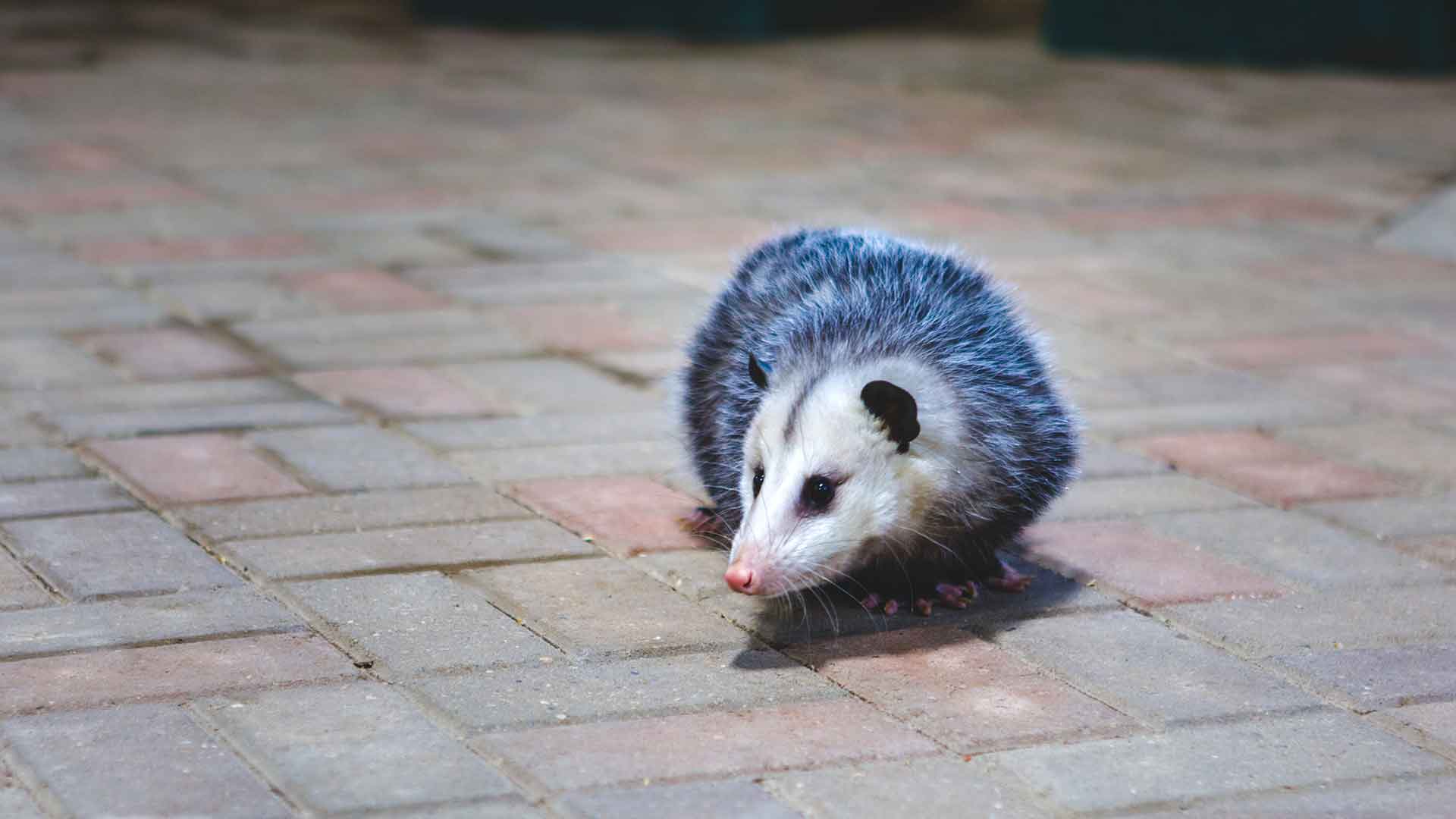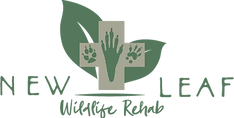What animals need help?
Animals that are visibly injured, have been in your pet’s mouth (even if no visible injury), appear ill, are overly friendly (or aggressive), are in danger, or are orphaned.
Please note, many ‘orphaned’ babies are perfectly healthy, in fact still under the care of their parents. For example, deer and rabbits leave their babies for hours at a time while they forage for food. This is a perfectly natural behavior that keeps predators away from the baby. Unsure? Click on the animal name below to find out more information on if the baby is truly orphaned.
A baby’s best chance of survival is always to be raised by its parents.


What to do if the animal is truly in need of help:
If you have determined that the animal needs help follow the Next Step directions. New Leaf Wildlife Rehab has an extensive network of wildlife rehabilitators to assist. Please reach out to one of our licensed wildlife coordinators listed below to coordinate care and figure next steps. Text is preferred with a picture attached. No calls after 8pm.
As with any wildlife, a chipmunk should be rescued if it:
- Has been found by a cat, dog, or other predator
- Has any injury
- Has bugs or fly eggs on it (these look like sawdust)
- Allows someone to pick it up or is lying on its side
- Is very thin or weak
If the baby chipmunk is consistently out of the burrow, is easy to catch, if there is no sign of mom, and/or if it is extremely thin, likely it needs help. If you think mom is still around, it is worth trying to reunite, even if you have touched the animal, mom will take it back if she can help, she may come and then leave, but come back for it in a few hours. To reunite, leave the baby in the exact spot where found (mom won’t know to go look anywhere else), you can place a hot water bottle (wrapped in a towel) under it for warmth. (Do not cover the animal with any materials; leave in plain view, otherwise mom won’t be able to find it). Monitor from inside. Try only during daylight. If after several hours mom does not at least come to see the chipmunk then it needs help.
As with any wildlife, a fox should be rescued if it:
- Has been found by a cat, dog, or other predator
- Has any injury
- Has bugs or fly eggs on it (these look like sawdust)
- Allows someone to pick it up or is lying on its side
- Is very thin or weak
Baby foxes are born in burrows in spring. Babies often begin emerging from the den and play for hours at a time while both parents are hunting. If the kits are energetic and healthy, leave them alone.
If you are certain that both parents are dead, the kits appear weak or sick, or if you find a single baby fox, the babies might need rescuing.
As with any wildlife, an opossum should be rescued if it:
- Has been found by a cat, dog, or other predator
- Has any injury
- Has bugs or fly eggs on it (these look like sawdust)
- Allows someone to pick it up or is lying on its side
- Is very thin or weak
Opossum mothers carry their babies in their pouches. Once the babies grow too large to fit in the pouch, they ride on their mother’s backs or tails. If a baby falls off when the mother is running, it will likely become lost, as she will not go back to retrieve it. Any opossum that is less than 8 inches long from nose to rump, not including the tail, needs to come into care.
If you find a dying or dead adult opossum, please check to see if there are babies in the pouch. If possible, remove the babies, and contact a rehabber immediately. If you cannot remove the babies, keep the mother warm and get her to a rehabber quickly. The babies will continue nursing on a dead mother and will become ill from drinking spoiled milk, so they need care ASAP.
To remove babies still attached to the mother’s nipples:
- Use a toothpick, Q-tip, other small tool, or even your fingernail to gently pry the baby’s mouth open enough to break the strong suction it has on the nipple.
- Pull the baby steadily but firmly to detach. A twisting motion may help.
- Put the babies in a small container and provide supplemental heat, as they become chilled very quickly.
An opossum over 8 inches long from nose to rump and is uninjured and able to move well can survive on its own and should be left alone, providing it is in a safe area.
If you are in doubt, reach out to one of New Leaf’s opossum contacts. Try to take a photo or video so we can help you determine whether the opossum needs intervention.
Baby squirrels may fall from their nest during storms, tree work, or when another squirrel tries to take over the nest. If the squirrel is not injured, it may be reunited with its mother, which is the best outcome for the both the baby and mother squirrel.
However, if the baby has been found by a cat, dog, or predator, it will likely have some kind of injury and will have been exposed to harmful bacteria requiring treatment. Likewise, if the baby has been without its mother for too long, it needs our help. Signs of this are fleas, fly eggs or maggots, lethargy, following humans, and dehydration. You can check for dehydration by pinching the skin on the back, pulling it up, and timing how long it takes the skin to return to normal position. If it’s over 2 seconds, the squirrel is dehydrated. If the squirrel shows any of these signs, contact a rehabber.
The procedure for reuniting baby squirrels is to first make sure the squirrel is warm to the touch. The mother will not retrieve a cold baby. Gently pick up the squirrel using a small towel. The squirrel should feel as warm as your face. You may need to bring the baby inside and place in a small container with a heat source. Examples of this are a heating pad set on low, a sock filled with half a cup of rice or dried beans and microwaved for 20-30 seconds, chemical hand warmers such as Hot Hands, or a bottle filled with warm water and placed in a sock. Be sure the temperature is pleasantly warm, not hot.
Once the baby is warm, and it is daylight, place it in a shallow box or basket with a soft cloth and the heat source. If possible, attach the container to the tree where the nest was, or off the ground as close as possible to where the baby was found, but not in direct sun. Keep pets away. Leave the area and watch from inside or a distance.
If the squirrel has fur, check every 2 hours for warmth and give the mother until dark to retrieve it. If the baby does not yet have fur, check hourly for warmth. If the mother does not retrieve it after 4 hours, contact a rehabber. In all cases, bring the baby in at dark. Keep it warm but DO NOT attempt to feed it anything. Squirrels can go without food or water for a day but must be kept warm. Trying to feed it or give any kind of liquid will keep the mother from retrieving it and also carries a great risk of getting the food or liquid into the lungs. Feeding the wrong thing or the wrong amount can cause serious bloat or diarrhea. All of this will cause the squirrel much more discomfort than missing a meal.
As with any wildlife, a woodchuck should be rescued if it:
- Has been found by a cat, dog, or other predator
- Has any injury
- Has bugs or fly eggs on it (these look like sawdust)
- Allows someone to pick it up or is lying on its side
- Is very thin or weak.
Baby woodchucks are born in burrows in the spring. Babies often begin emerging from the burrow under the mother’s supervision.
It is very unusual to find a single baby woodchuck. If you find one, it is probably orphaned and needs rescuing.
If you find a litter of babies and there is no mother nearby, they might need rescuing.
What to do next
Once you determine that a wild mammal needs rescuing, please take the following steps until you can reach one of our wildlife rehabilitators.
Do not try to handle any adult wildlife yourself. If it is safe to do so, try to corral an adult mammal into a box or pet carrier. Please always wear protective gloves. You can use a towel to scoop up a baby animal. If it is not safe to catch the animal, try to block it off to prevent its escape.
- Place the animal in a covered box or pet carrier with ventilation. You can use an old t-shirt or other ravel-free material as bedding. Do not use towels and make sure there are no holes or loose threads. Cover the carrier with a towel or sheet to keep it dark.
- Leave the carrier in a warm, dark and quiet place indoors, away from pets and people. Please do not cause unnecessary stress by handling, talking to or peeking at the animal.
- All baby animals need to be kept warm. Put the box half-on and half-off a heating pad set to low, so that the animal can move to the non-heated side if it is too warm. Never place an animal directly on a heating pad. You can also fill a soda bottle with hot water, wrap it in a towel and brace it inside the box so that it does not roll on the animal. Replace the hot water frequently as it cools down.
- NEVER give the animal any food, milk, formula or water. Feeding the wrong thing, at the wrong time or in the wrong way can harm the animal.
- To reduce stress during transportation, please turn the radio off and leave your children and pets at home.
Bird & Fawn
New Leaf does not currently work with these species. Please go to Animal Help Now to find other local rehabbers.
Bat, Fox, Ground Hog, Raccoon & Skunk
Roseann Michalowski
Statesville, NC
704-929-4569
Turtle
Heather Ward
Concord, NC
704-906-7297
Opossum
Joan
Mint Hill, NC
704-830-4758
Heather Ward
Concord, NC
704-906-7297
Roseann Michalowski
Statesville, NC
704-929-4569
Bunny
Michele Rothschild
Charlotte, NC
704-890-4936
Heather Ward
Concord, NC
704-906-7297
Roseann Michalowski
Statesville, NC
704-929-4569
Chipmunk (Ground Squirrel) & Squirrel
Joan
Mint Hill, NC
704-830-4758
Stephanie Murphy
Huntersville, NC
404-936-2440
Heather Ward
Concord, NC
704-906-7297
Roseann Michalowski
Statesville, NC
704-929-4569
